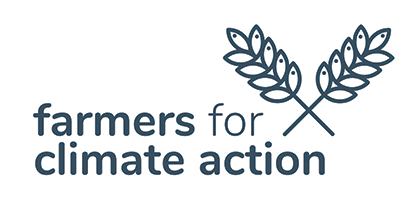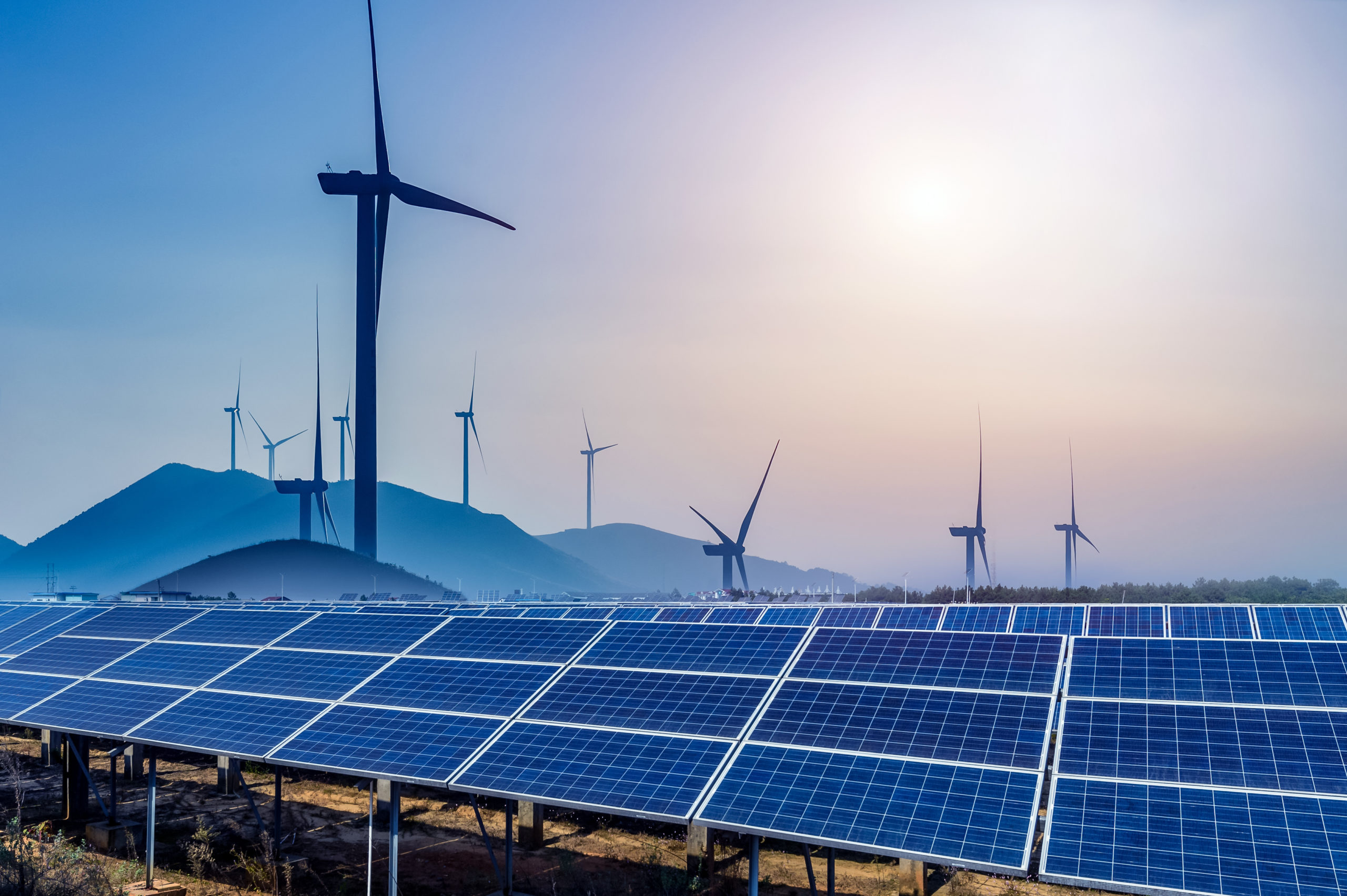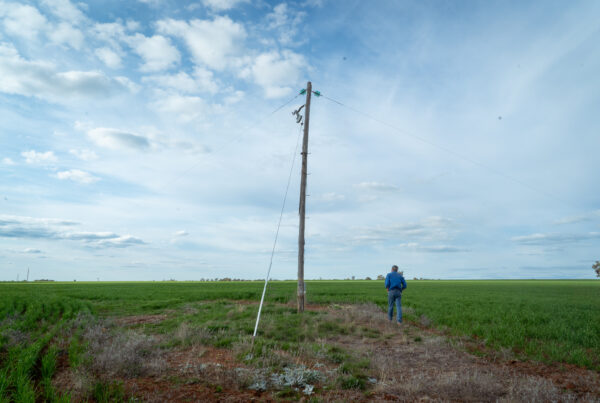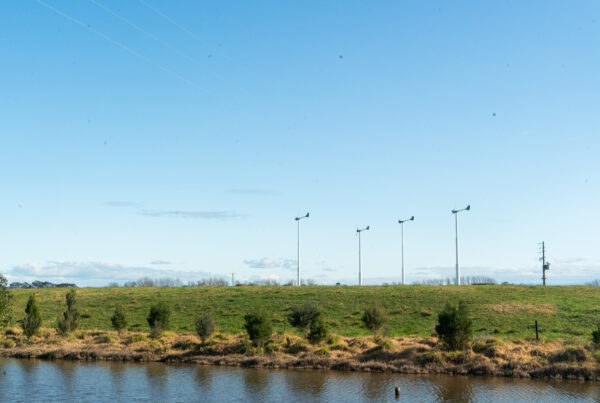10 October 2023
Farmers for Climate Action Submission: Senate Inquiry into Residential Electrification
Executive Summary
Farmers for Climate Action thanks the Senate Standing Committee on Economics for the opportunity to provide a submission for the Inquiry into Residential Electrification.
Farmers for Climate Action represents more than 8,000 farmers across Australia and 45,000 supporters committed to deep emissions reductions across the economy this decade. Farmers for Climate Action strongly supports the rapid deployment of renewable energy to achieve deep emissions reductions to limit climate change impacts, protecting the future of farms and food security.
While making up only a small percentage of Australia’s households, farming residents are fundamental to Australia’s shift to residential electrification.
Australian farmers want to see:
- A diversion of subsidies from fossil fuels, to instead incentivise the rapid uptake of renewables and EVs
- Improved long-term community benefit sharing in areas hosting renewable energy developments and associated transmission, and
- Equitable entry to energy markets to allow rural Australians to supply excess energy generation into the grid.
This submission is informed by our recent report Farm Powered which explores opportunities for regional communities in the renewable energy boom. It is also supported by the results of an in-depth survey of more than 300 farmers in September 2023 into the opportunities and challenges presented by renewables on farm.
Key opportunities for the electrification of farming households include:
- Installation of solar PV panels on residential buildings and sheds that currently remain reliant on sourcing energy from the grid
- Installation of batteries for homes and farm use and larger batteries for regional communities where practical
- Purchasing of electric vehicles (EVs) for domestic use and electric farm vehicles (utes, motorcycles and 4WDs), representing a significant saving in fuel costs
- Vehicle to home (or shed): two-way connection of EV batteries to homes or sheds.
Key recommendations to support the electrification of farm households and operations:
- Implement renewable energy installation incentives for farmers, supported by a national energy audit program, to increase rapid uptake and reduce input costs.
- Reduce the current payback period for batteries from ten years to five to enable farm households and work sheds to use the renewable energy stored and to future-proof the grid as the energy mix changes.
- Change regulatory restrictions which stop a farmer from using renewable energy generated on one property title on their farm on another title.
- Install extra wires on existing poles in regional areas. Rural residents, who generally have a one-power (Single Wire Earth Return) line system are unable to export excess power generated into the grid. Updating to three-phase transmission will provide more incentive for electrification.
- Implement a strong, mandatory Fuel Efficiency Standard for Australia to increase the range of electric utes, 4WDs and motorcycles available for farmers to purchase, and drastically reduce diesel costs.
- Explore the regulatory barriers that currently prevent regional and on-farm vehicle-to-home/shed charging. Enabling two-way batteries (vehicle-to-home or V2H) between EVs (cars and farm machinery) would support farmers to reduce reliance on the grid, especially at peak times.
- Establish an agricultural program within the Australian Renewable Energy Agency (ARENA) to fund demonstration and knowledge sharing projects for renewable energy and battery solutions on farm.
- Allocate funding to establish an agrivoltaics research and knowledge sharing program to boost farm profitability and show communities that agriculture and energy production can co-exist.
Our submission also provides recommendations on how farmers can be supported to supply and transport renewable energy and how to support farm households who are currently limited in their ability to export renewable energy to the grid.
Farmers for Climate Action would like to extend an offer to the Committee to visit farms that have already electrified and/or farms that would like to electrify with better incentives and reduced barriers. We would be happy to coordinate this.
About Farmers for Climate Action
Farmers for Climate Action is a movement of farmers, agricultural leaders and rural Australians working together to ensure Australia adopts strong emissions reduction policies by growing the number of farmers, farming communities and elected representatives championing ambitious action.
We represent more than 8,000 farmers across Australia, and our supporter base includes more than 45,000 Australians committed to deep emissions reductions across the economy this decade.
Background
There are approximately 85,483 Australian agricultural businesses in Australia, the majority of which have at least one household and in many instances multiple residential dwellings.
It is critical that the farming community is considered in the review of Australia’s residential electrification, not only to support farming residences in the shift to electrification but critically also, in enabling farm households to be a major contributor to renewable energy supply and transmission.
Nationally, the imperative to rapidly deploy renewables is clear. This is key to achieving the deep emissions reductions we need this decade to limit climate change impacts, protecting the future of farms and food security.
Fundamentally, farmers in the Farmers for Climate Action network understand the urgent need to shift from fossil fuels to renewables. Removing subsidies from fossil fuels and diverting subsidies to increase the rapid uptake of technologies to aid in household and economy-wide decarbonisation should be the priority for economic levers to transition the economy.
In a recent survey conducted by Farmers for Climate Action into renewables on farm:
- 92% of participating farmers overwhelmingly support Australia’s acceleration to more renewable energy in our national grid
- 76% of farmers surveyed have already introduced renewable projects or host renewable energy infrastructure on their farms
- with 96% open to generating or hosting more renewable energy on their properties.
Economic Opportunities and Challenges
Over the past two decades, many farmers have opted to invest in renewable energy infrastructure to cut their household and enterprise costs and to access more certainty of supply than grid electricity. Electrification on farms also means a reduction in diesel use, a significant economic saving at the household level.
It is important to contextualise the opportunity renewables present by noting that structurally, regional Australians already pay more and experience less reliable power than metropolitan Australians.
Within the cohort of farms that have made the shift to more self-sufficient energy generation, a portion have opted to remove reliance and ultimately grid connection. While this provides certainty for these farming households and businesses, this is also a missed opportunity for farmers to feed excess renewable energy into the grid – where it is needed for the economy-wide energy shift.
Electrification of farming households
While farmers on average are paying more for energy to power their residential needs, in addition to higher energy input costs to run their farming enterprise, those who have invested in generating and storing their own renewable energy supply have reaped the benefits of saving on energy bills and increasing resilience against grid instability.
The direct opportunities for the electrification of farming households include:
- Installation of solar PV panels on residential buildings and sheds that currently remain reliant on sourcing energy from the grid
- Installation of batteries for homes and farm use and larger batteries for regional communities where practical
- Purchasing of electric vehicles (EVs) for domestic use, representing a significant saving on diesel costs
- Purchasing electric farm vehicles (utes, motorcycles and 4WDs) – currently cost prohibitive and with weak fuel efficiency standards in Australia, there are very few options on the market
- Vehicle to home (or shed): Connecting EV batteries to homes or sheds. Incentives for two way chargers, or vehicle-to-home chargers, may be required.
Enabling two-way batteries (vehicle-to-home or V2H) between EVs (cars and farm machinery) would support farmers to reduce reliance on the grid, especially at key times (e.g. the evening peak).
The associated ongoing cost-savings would represent a valuable financial incentive to farmers. Two-way batteries could also represent a much more cost-efficient option than stand-alone batteries, in addition to a much lower environmental impact with fewer lithium batteries required to perform the same job.
We ask that the Committee considers exploring the regulatory barriers that currently prevent regional and on-farm vehicle-to-home/shed charging in most cases.
Support farming households
High upfront capital costs and a lack of supporting energy infrastructure continue to impede the adoption of farm household and on-farm renewables, especially for technologies like EVs, batteries and infrastructure (such as agrivoltaics). This is despite incentive schemes designed to drive solar PV on households, which farming and regional households are unable to equitably participate in. Incentives for EVs have been small and inconsistent and incentives for batteries mostly non-existent. These barriers to participation must be addressed.
A key on-farm example is the cost impediment to physically raise solar panels to allow sheep to graze under them so the farmer can run both traditional agriculture and harvest solar, known as agrivoltaics. Farming and renewable energy – when done right – are complementary. In addition to a new and extra income stream, farming livestock whilst hosting renewable energy can deliver a range of productivity benefits, including protection for sheep from heat and wind and in horticultural systems, higher soil moisture and reduced need for irrigation.
Agrivoltaics case study – sheep and solar:
Tom Warren, a farmer in the Central West of NSW, hosts an 18MW solar farm and runs about 250 merino ewes and wethers on 54 hectares of land. Tom believes that as well as earning a secondary income from leasing his land, the solar panels have increased the carrying capacity of the block by about 25%. This was important during the drought in 2018, as water condensed on the solar panels in the mornings and trickled down below to keep strips of pasture green for his sheep to feed on. This resulted in him only needing to buy feed for three months of the two year drought.
“Hosting an 18MW solar farm was a great opportunity for me to supplement my agricultural income. I was very keen from the outset that I would get the opportunity to graze my merino sheep beneath the panels. The company agreed and it’s been a win-win ever since. I’ve noticed the sheep’s wool is relatively clean, without burrs, without dust. There’s very, very little contamination of the wool and they’re protected from the sun as well.”
Opportunities for the Federal Government to assist in the electrification of farms are outlined in Farmers for Climate Action’s recent Farm Powered report which explored opportunities for regional communities in the renewable energy boom. The report drew on extensive consultation, interviews and case study explorations across Australia. Recommendations identified in the report include:
- Renewable energy installation incentives for farmers, supported by a national energy audit program, to increase rapid uptake on farms and reduce input costs.
- Incentives to reduce the payoff period for batteries. Currently batteries typically have a ten-year payoff period. If incentives could halve the investment farmers have to make, the battery payoff could be five years and rapid adoption would result. The logical flow on would be electrification of homes and work sheds to use the cheap energy stored in the batteries. The additional storage would make the grid more stable and more future-proof as the energy mix changes.
- Establishing an agricultural program within the Australian Renewable Energy Agency (ARENA) to fund demonstration and knowledge sharing projects for renewable energy and battery solutions on farm
- Funding to establish an agrivoltaics research and knowledge sharing program to boost farm profitability and show communities that agriculture and energy production can co-exist
- Change regulatory restrictions which stop a farmer from using renewable energy generated on one property title on their farm from being used on another title. We have farmers who cannot power their sheds using their solar panels because the two are on different titles. Anytime you cross the line of a property title, of which many farms have several, you instead have to feed the energy to the grid. Fixing this will provide incentive for more electrification and storage.
- Install extra wires on existing poles in regional areas. Metropolitan residents have the ability to feed power directly into existing grid infrastructure. Rural residents, who generally have a one-power (SWER) line system, are unable to export excess power generated. Updating to three-phase transmission will provide more incentive for electrification.
In addition, assistance for the widespread shift to EVs should be a key priority for the residential electrification efforts. Support should be provided to encourage all Australians to adopt EVs and for farmers to shift not only their household vehicles but also their farm vehicles, including utes, tractors and motorbikes to electric. This would not only significantly reduce national emissions, but also reduce the need for stand-alone batteries and instead utilise the EVs as two-way batteries.
Support for farmers supplying and transporting renewable energy
Economic incentives will assist in increasing uptake of electrification on farms, however a systems approach to understanding the economic, social and environmental impacts in rural areas is also required. Genuine engagement with affected communities is paramount for the timely rollout of residential electrification and large scale renewable energy projects.
Currently, there is a focus on large-scale renewable energy developments (and transmission to connect them to the grid), often delivered without adequate consultation or benefit sharing with the farmers and regional communities affected. This has resulted in discontent by farmers at the lack of engagement and adequate consideration to benefit sharing in those communities.
Opportunities for the Federal Government to improve accessibility and fairness for farmers and regional communities in transmission and REZ planning include:
- The development of an Model Code of Conduct that includes best practice principles for integrating renewables and transmission, developed by farmers, for farmers, with genuine recompense and mitigation options.
- State and Federal Governments provide a mechanism for improved benefit sharing arrangements for renewable energy and transmission project hosts and communities, including reduced energy bills for local residents, higher annual payments to hosts, payments to neighbours, and funding for community benefit programs
- REZ’s currently being rolled out should have support available for farmers and communities with independent advice provided in the contract negotiation stage of renewable energy developments.
- Community ownership / equity shares in large-scale renewables: The Federal Government should introduce additional measures to those set out in the Powering Australia policy to support community renewable energy by adopting programs similar to those suggested by the Local Power Plan and the Clean Energy Council’s report on benefit sharing. These could be implemented by ARENA and Clean Energy Finance Corporation (CEFC).
Farm households are limited in their ability to export renewable energy to the grid
The current complexities and approach to Australia’s grid management does not enable farm households to supply energy to the grid for projects bigger than 5 megawatts without significant investment for connectors. Within the current system, if the customer wants to increase the capacity to export energy, they have to pay to upgrade the system.
Australia has the world’s highest per-capita solar energy penetration, with almost one in three homes hosting PV panels. However, there is a limit to metropolitan expansion for renewable energy generation. In contrast, farming households, who manage 55% of Australia’s land mass, have the capacity to generate renewable energy at scale.
Metropolitan residents have the ability to feed power directly into existing grid infrastructure. Rural residents, who generally have a one-power line system, are unable to export excess power generated because the line is not enough to allow substantive exports of electricity.
As noted above these households have significant land that could be used for renewable energy, but these opportunities are limited by strong opposition to new transmission in regional areas.
While urban residents have the ability to generate income from their roof-top solar, farm residents should be provided the same opportunity from their rooftop power along with other power they are able to generate on their properties. We recommend that analysis be conducted on the cost, feasibility and benefits of adding a second powerline to properties and subsidising the connectors required for projects larger than 5 megawatts.
As outlined in Farmers for Climate Actions’s recent Farm Powered report, the Federal Government should:
- Identify areas in which hosting capacity could be increased through 1-5MW solar developments.
- Trial the carving out of a community energy component within a large scale REZ helping to develop and sustain social license for large scale investments. Some design accommodation within the transmission infrastructure is needed to enable a small collection of 1-5MW projects to tie into the otherwise dedicated REZ infrastructure.
- Eliminate export limits which prevent farmers from exporting more renewable energy to the grid.
- Broaden the Australian Energy Regulator’s framework beyond a population density calculation, in determining infrastructure upgrades for the distribution network.
- Develop a plan that identifies areas to prioritise and fund upgrades from Single Wire Earth Return (SWER) to three-phase across regional Australia.
Conclusion
While making up only a small percentage of Australia’s households, farming residents are fundamental to Australia’s shift to residential electrification.
Australian farmers want to see a diversion of subsidies from fossil fuels, to instead incentivise the rapid uptake of renewables and EVs, improved long-term community benefit sharing in areas hosting renewable energy developments and associated transmission, and the ability for equitable entry to supply excess energy generation into the grid for rural Australians.
Farmers for Climate Action would like to extend an offer to the Committee to visit farms that have already electrified and/or farms that would like to electrify with better incentives and reduced barriers. We would be happy to coordinate this.
Sincerely,
Natalie Collard
CEO, Farmers for Climate Action
Email: [email protected]
Phone: 1800 491 633
Web: farmersforclimateaction.org.au
Post: Suite 327 M Centre, 11 Palmerston Lane, Manuka ACT 2603







